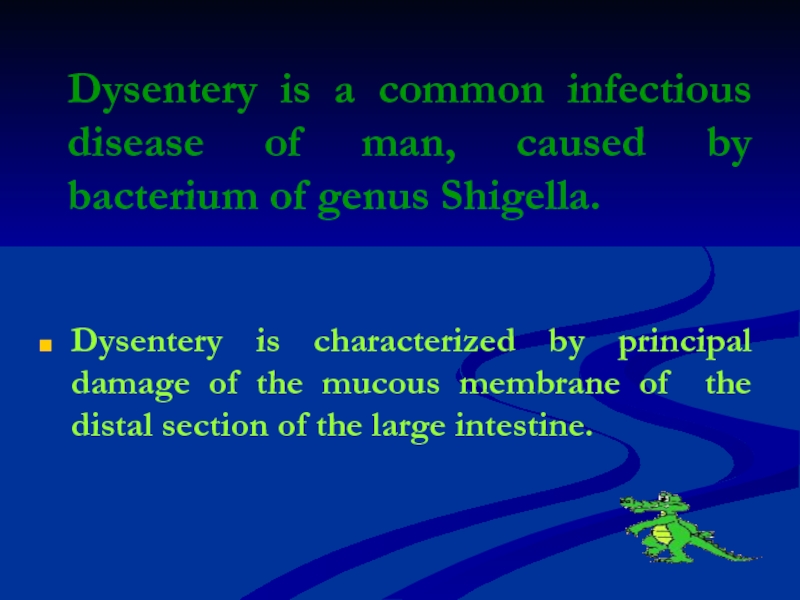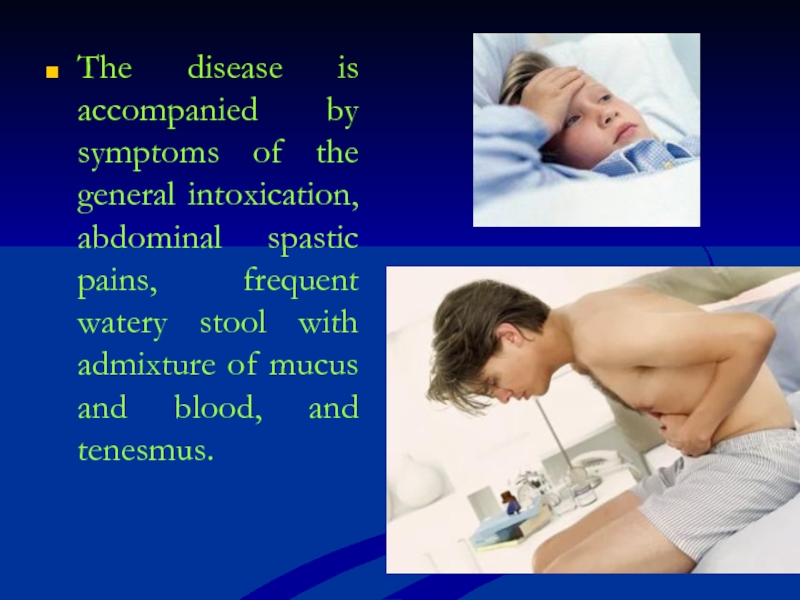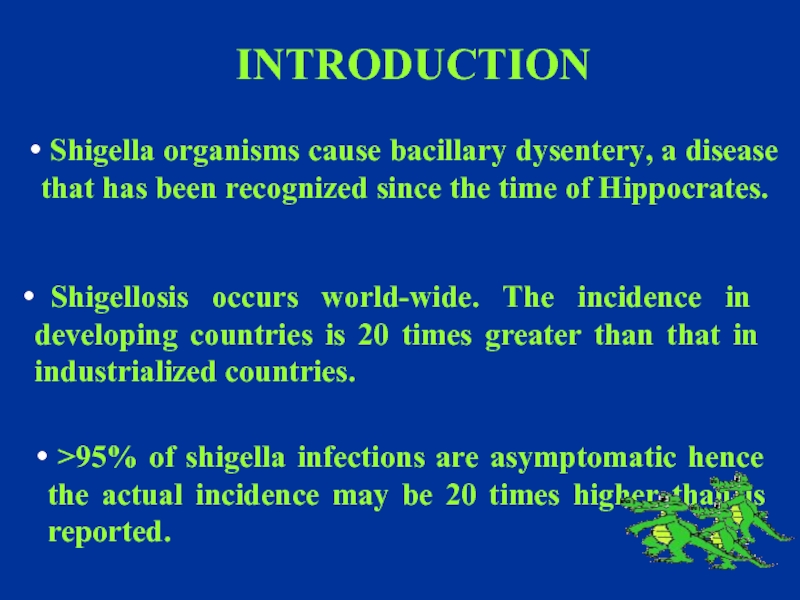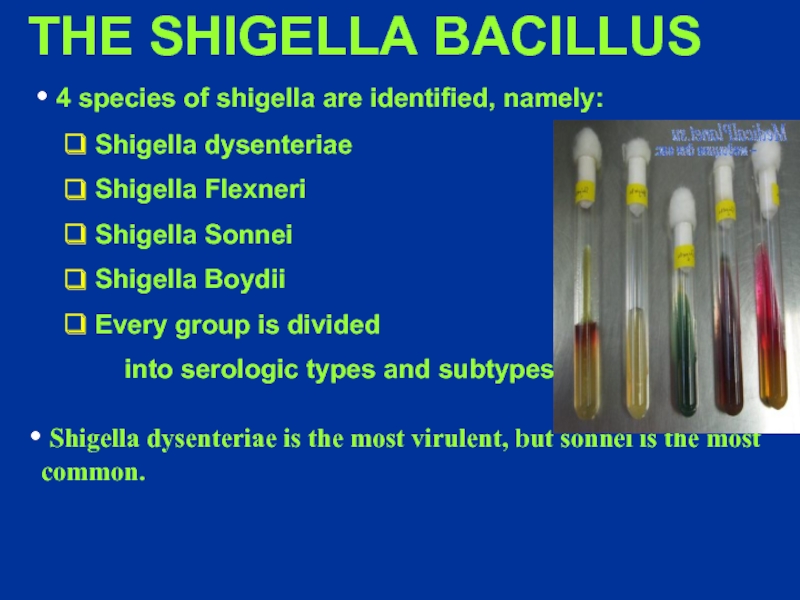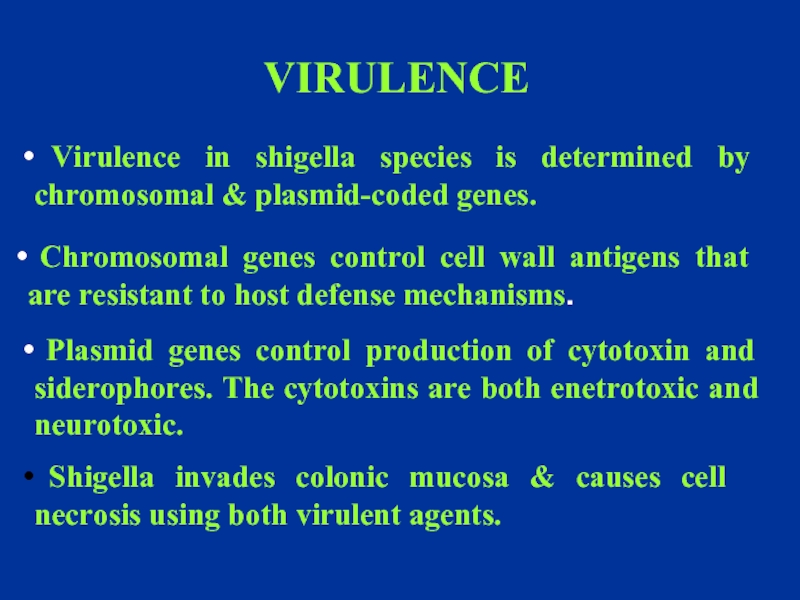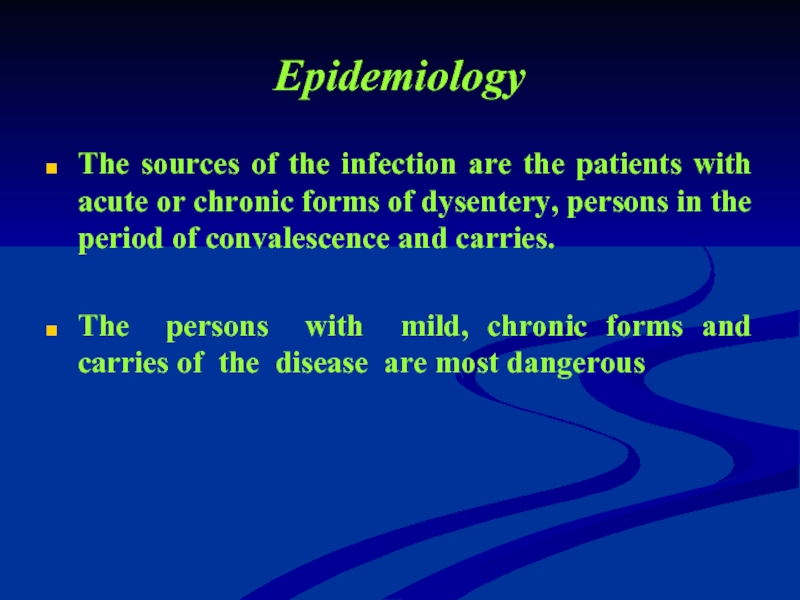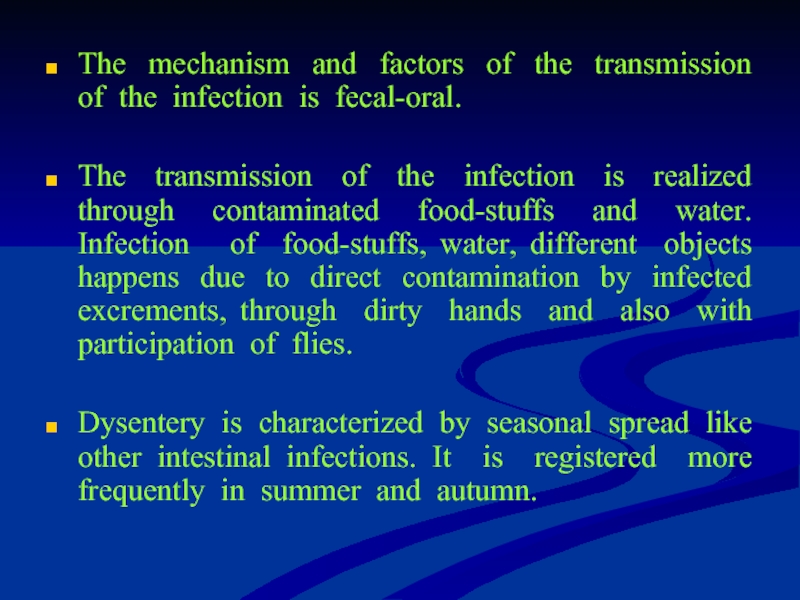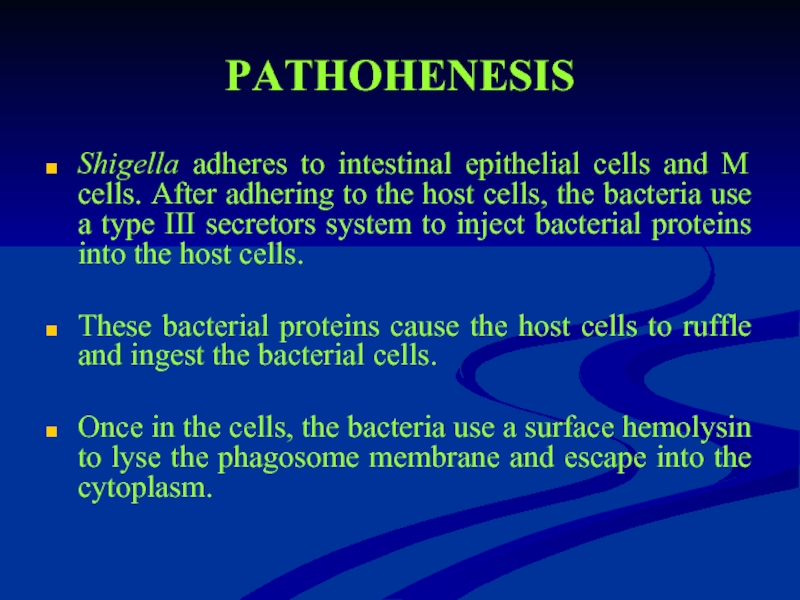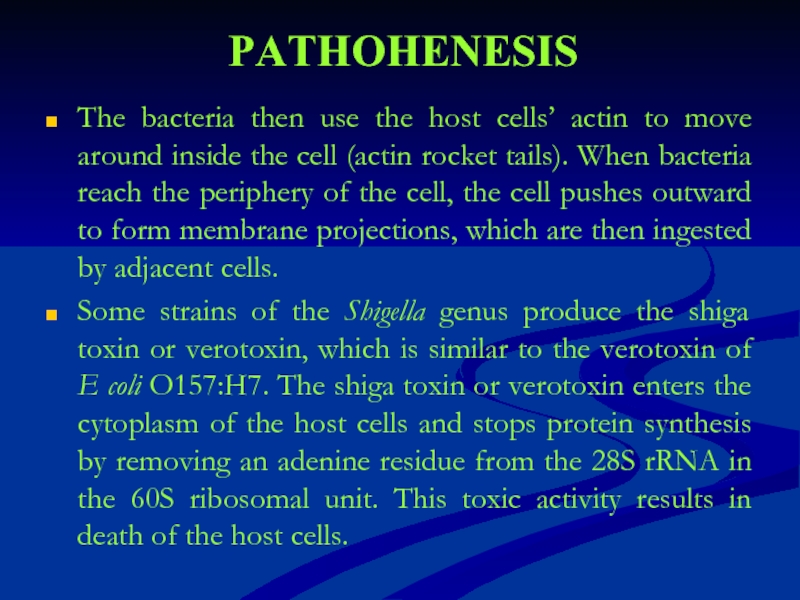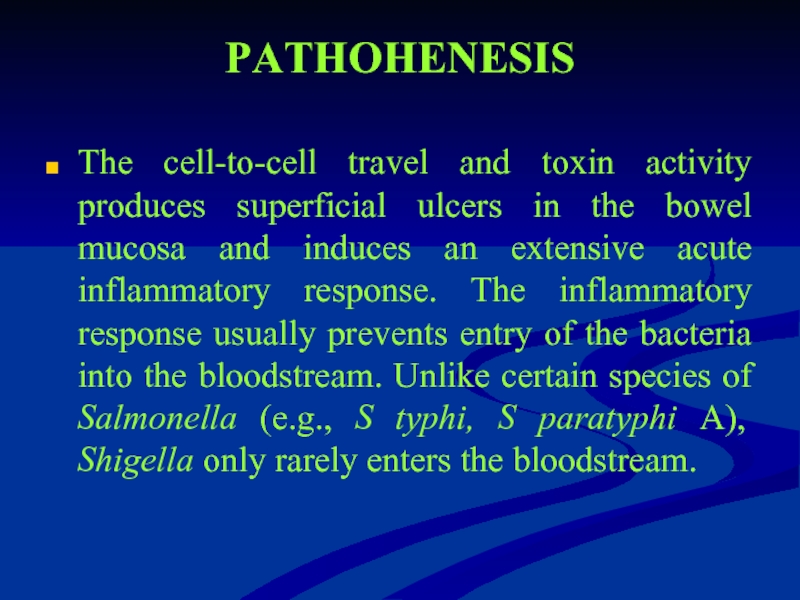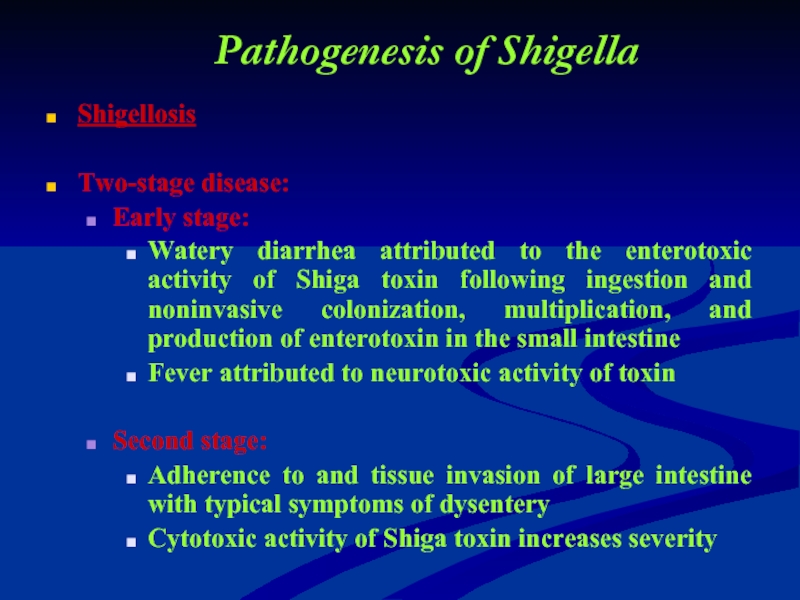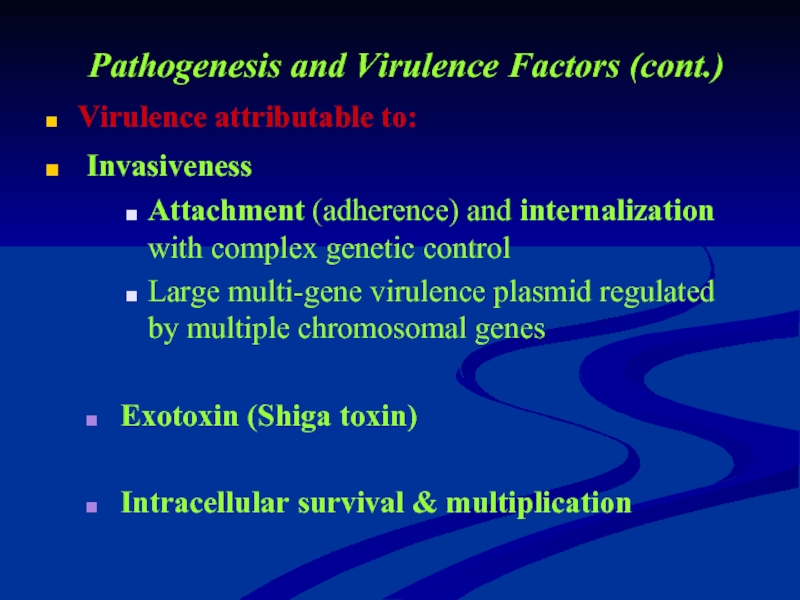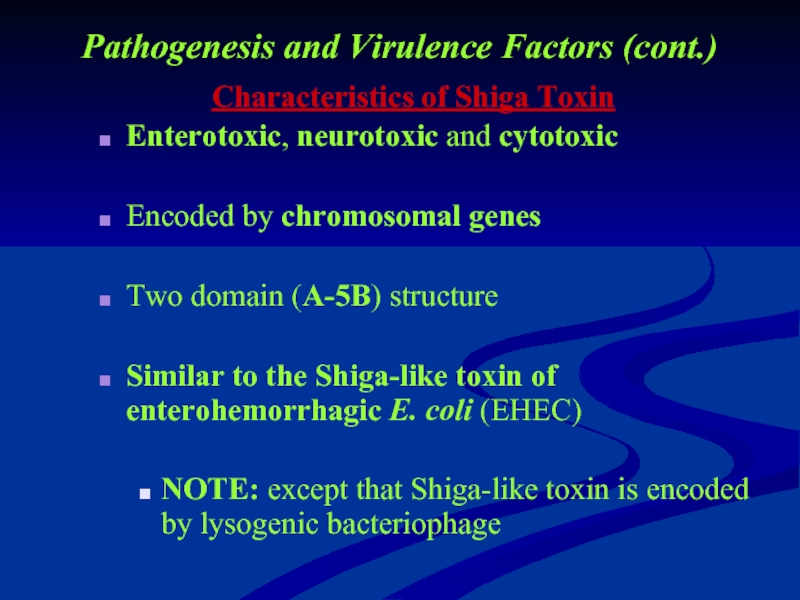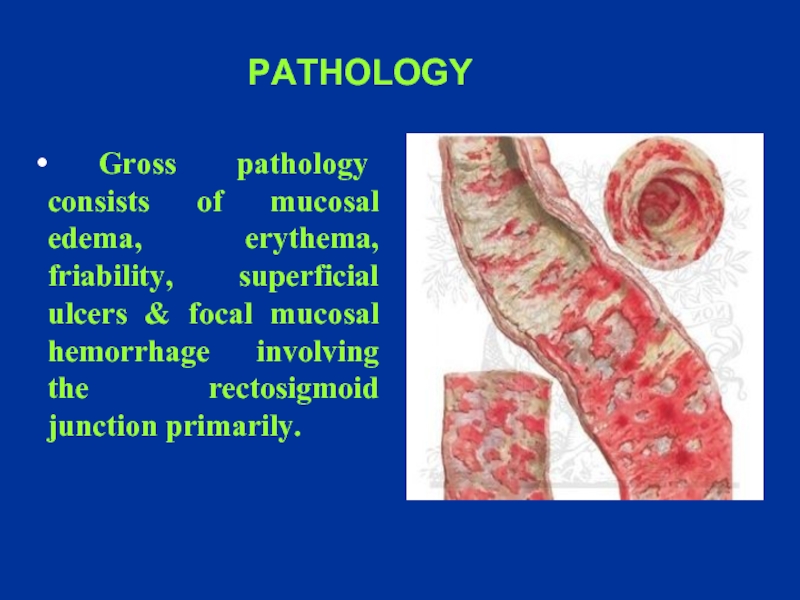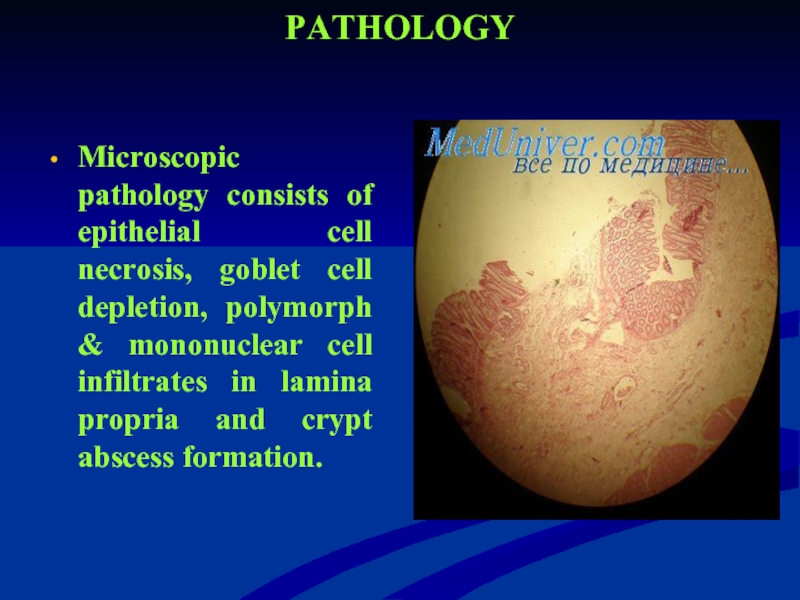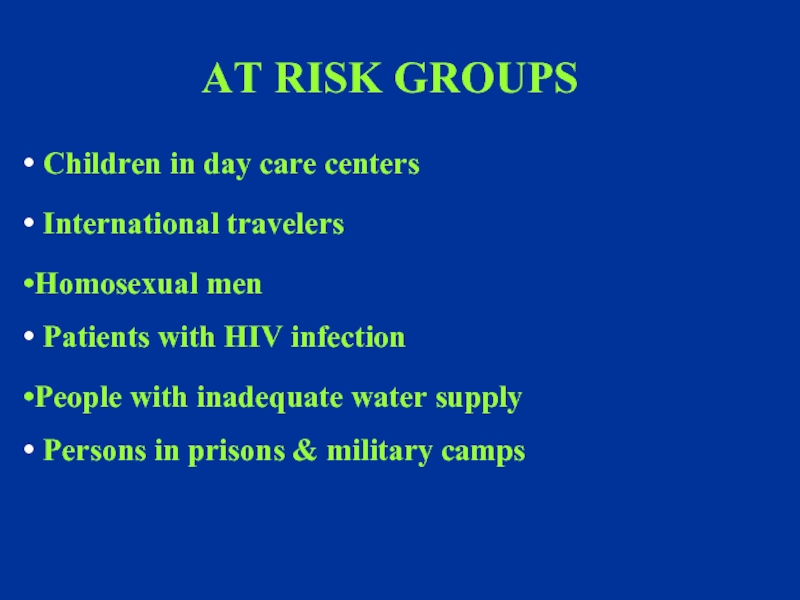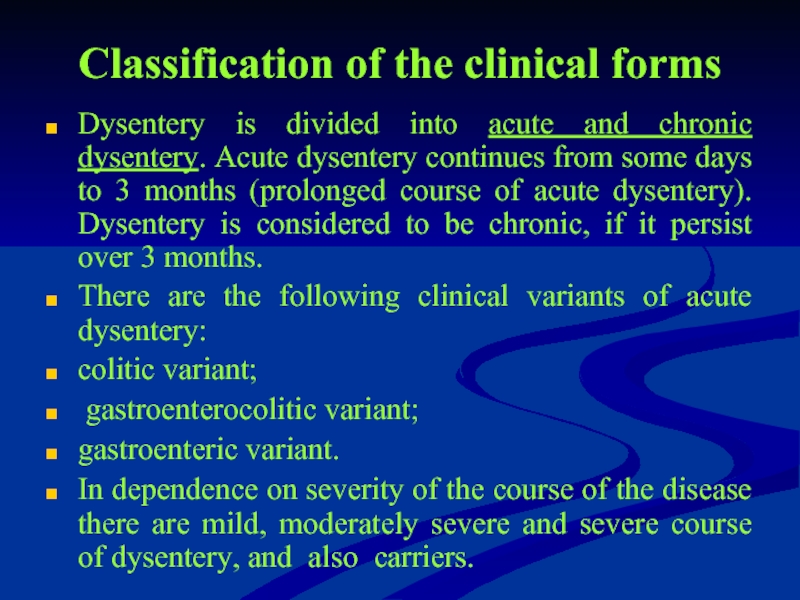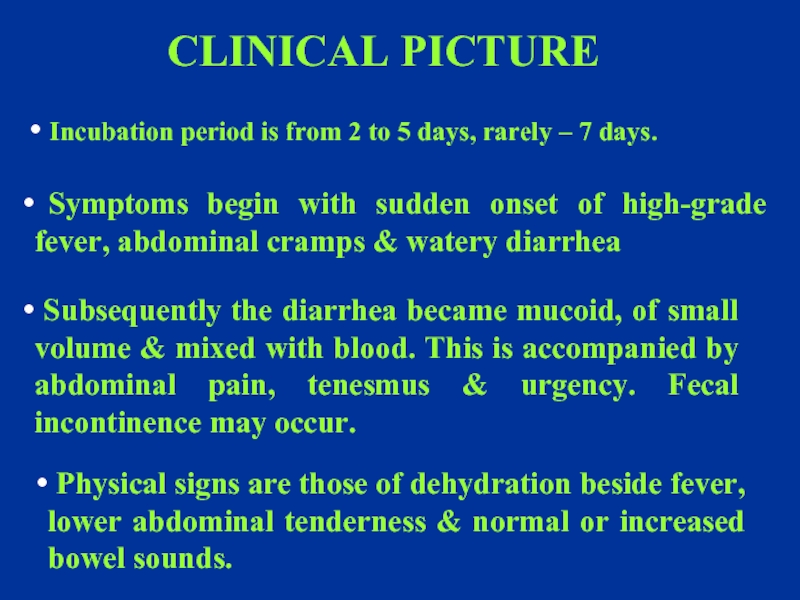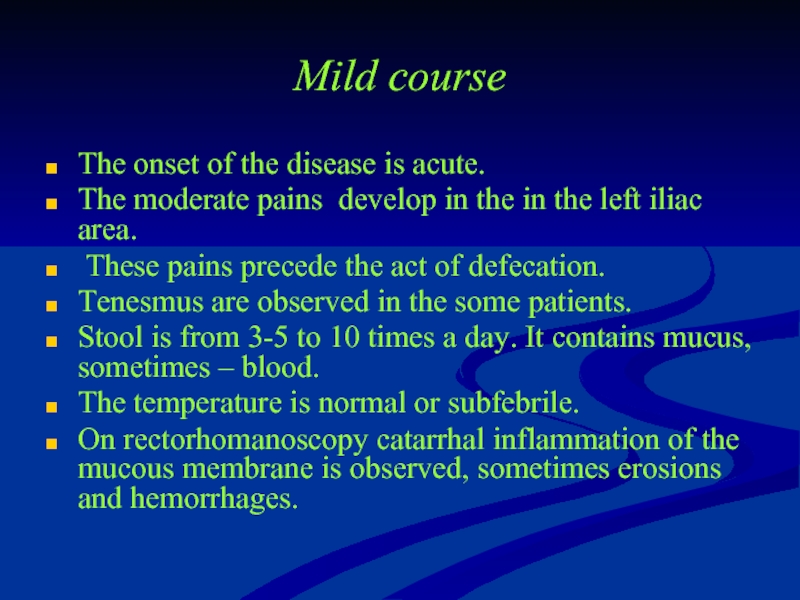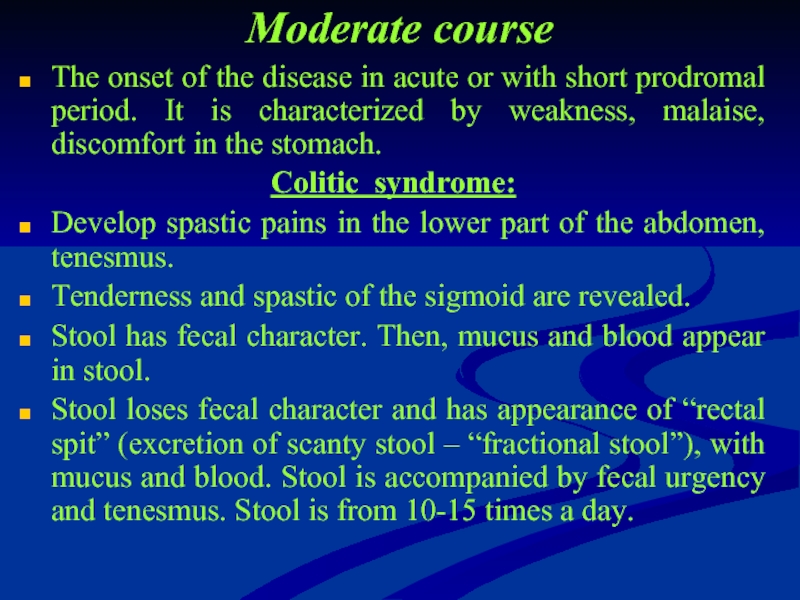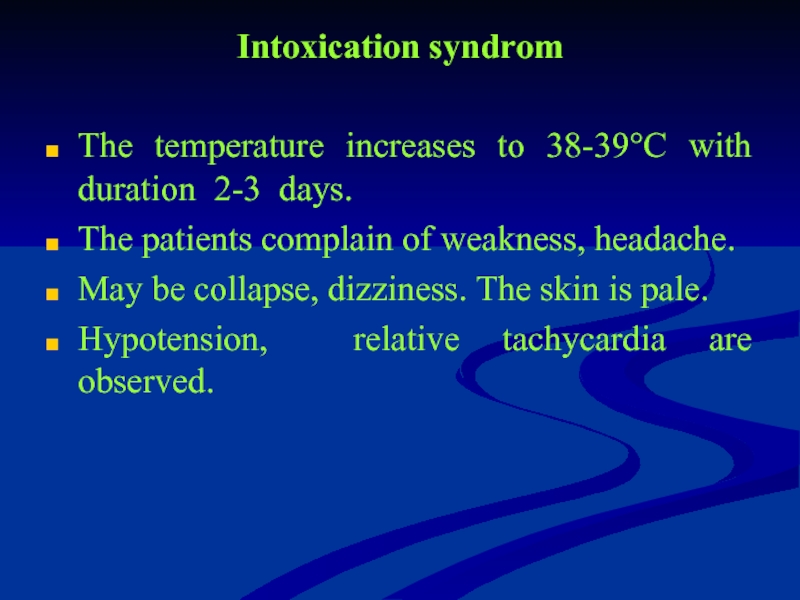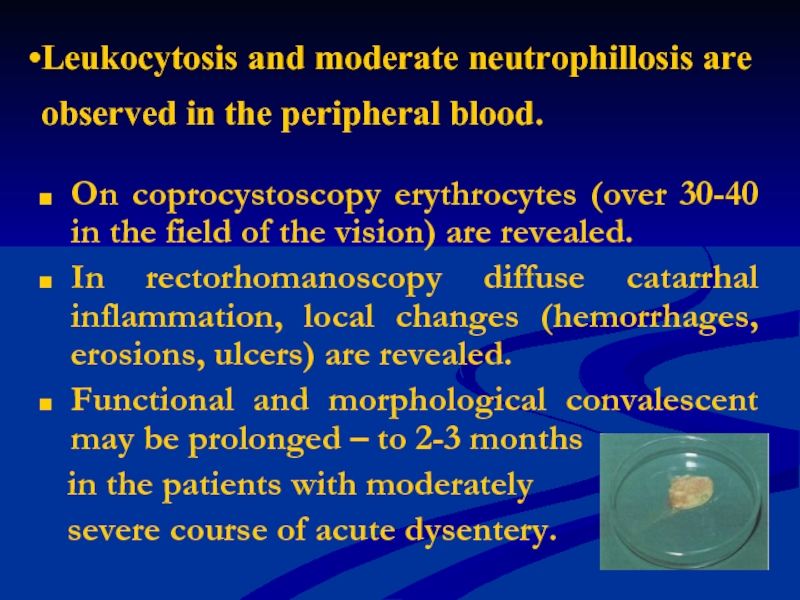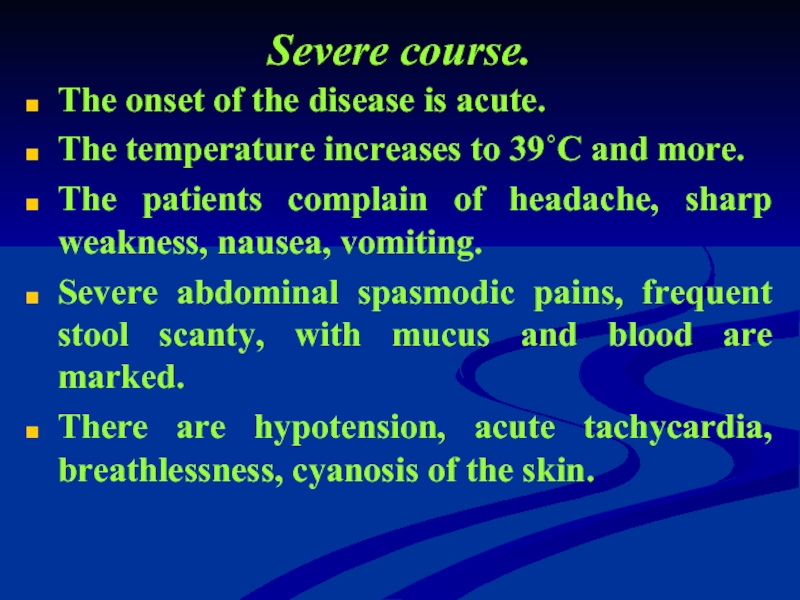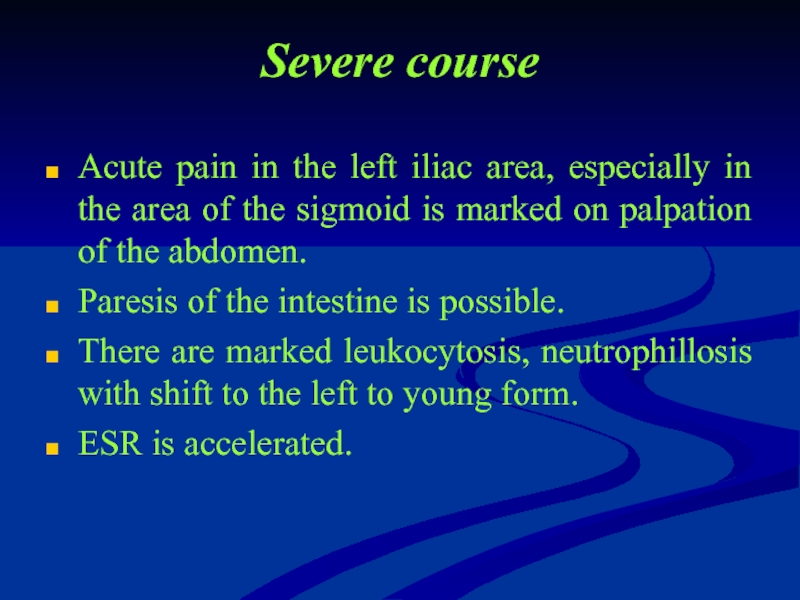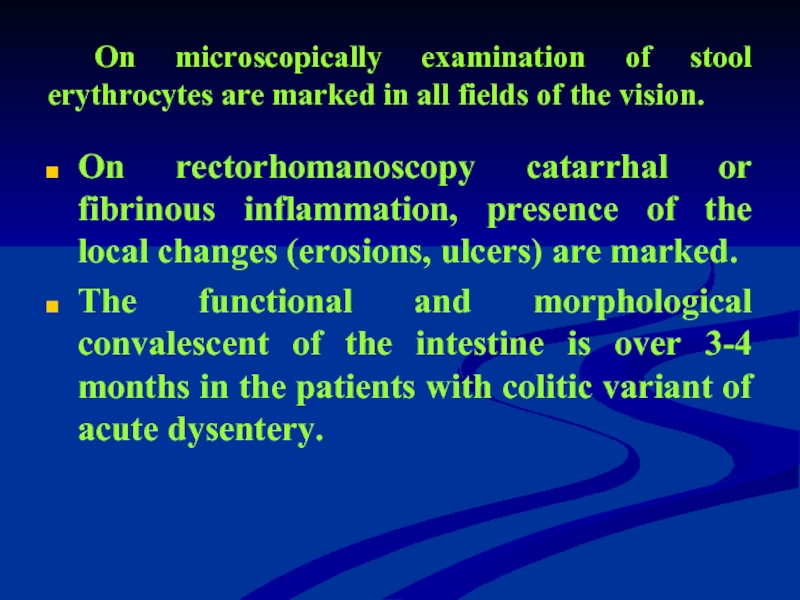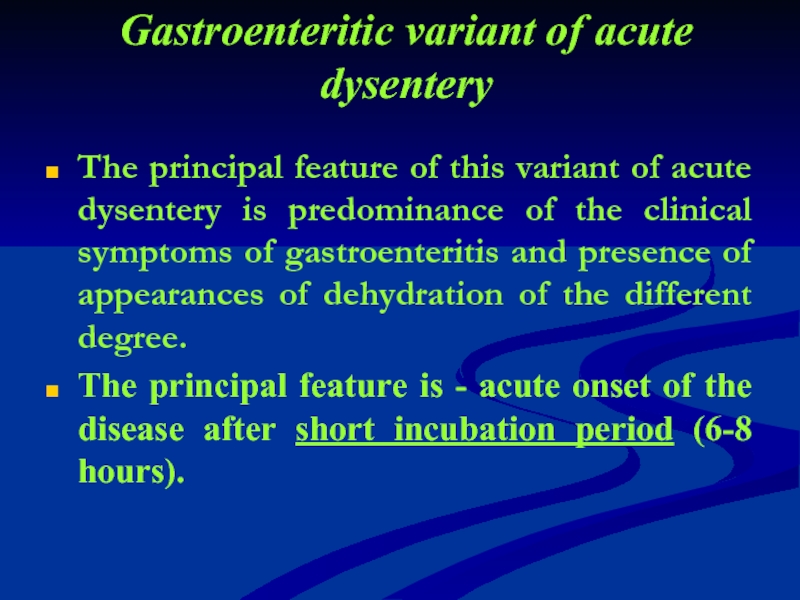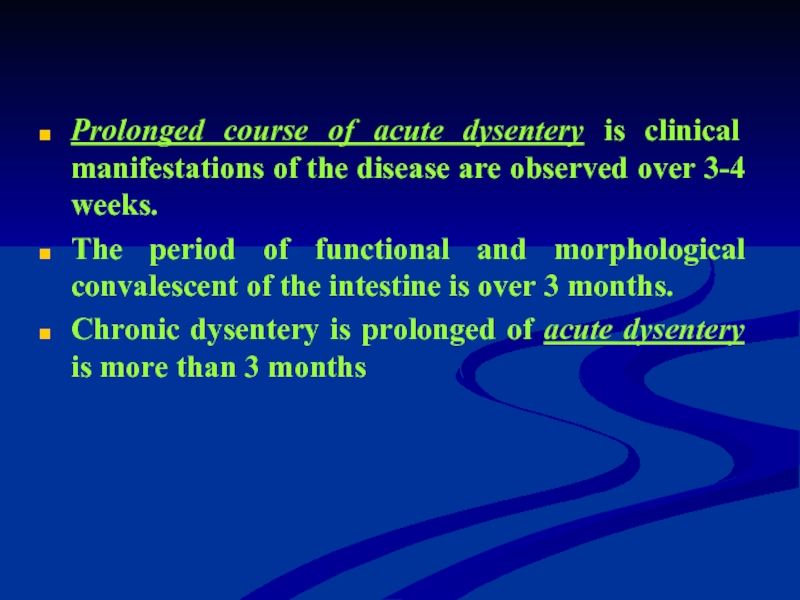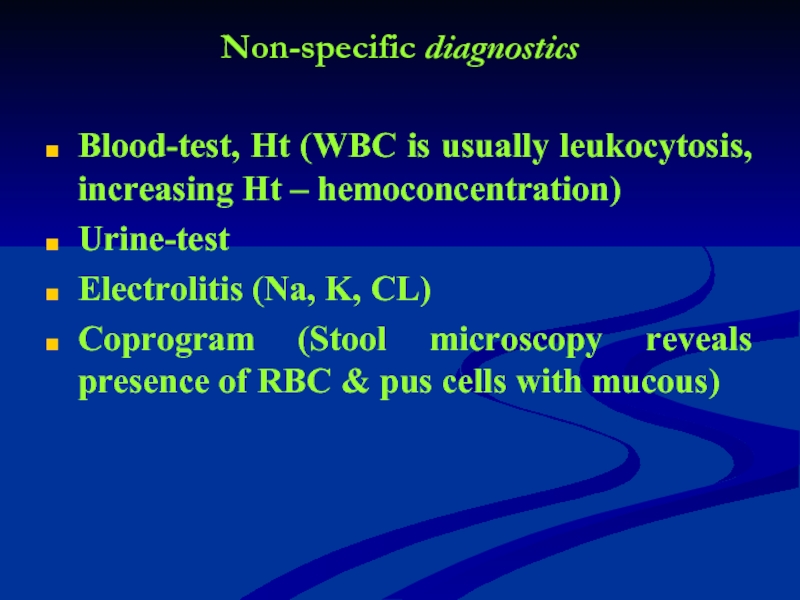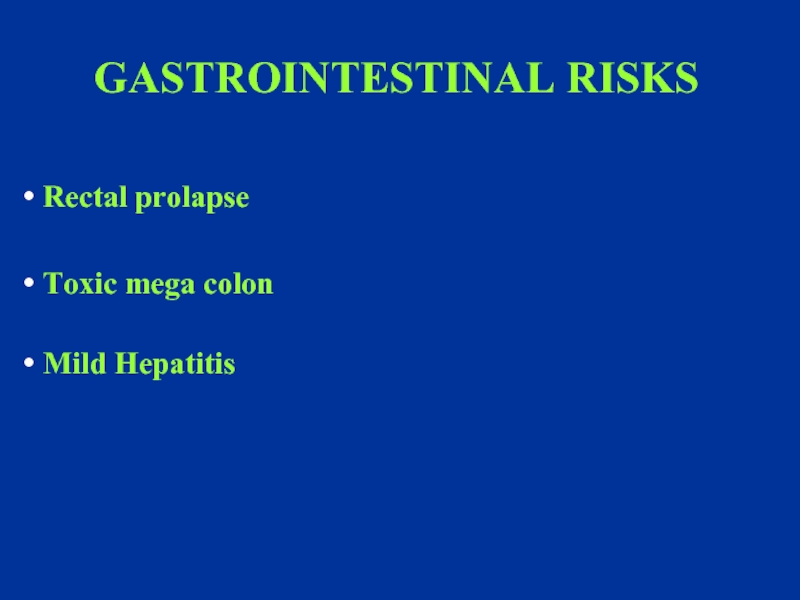- Главная
- Разное
- Дизайн
- Бизнес и предпринимательство
- Аналитика
- Образование
- Развлечения
- Красота и здоровье
- Финансы
- Государство
- Путешествия
- Спорт
- Недвижимость
- Армия
- Графика
- Культурология
- Еда и кулинария
- Лингвистика
- Английский язык
- Астрономия
- Алгебра
- Биология
- География
- Детские презентации
- Информатика
- История
- Литература
- Маркетинг
- Математика
- Медицина
- Менеджмент
- Музыка
- МХК
- Немецкий язык
- ОБЖ
- Обществознание
- Окружающий мир
- Педагогика
- Русский язык
- Технология
- Физика
- Философия
- Химия
- Шаблоны, картинки для презентаций
- Экология
- Экономика
- Юриспруденция
Shigella infection презентация
Содержание
- 1. Shigella infection
- 2. Dysentery is a common infectious disease of
- 3. The disease is accompanied by symptoms of
- 4. INTRODUCTION Shigella organisms cause bacillary dysentery,
- 5. Shigella species are aerobic, non-motile, glucose-fermenting, gram-negative
- 6. THE SHIGELLA BACILLUS 4 species of
- 7. Virulence in shigella species is determined
- 8. Epidemiology The sources of the infection are
- 9. The mechanism and factors of the transmission
- 10. PATHOHENESIS Shigella adheres to intestinal epithelial cells
- 11. PATHOHENESIS The bacteria then use the host
- 12. PATHOHENESIS The cell-to-cell travel and toxin
- 13. Pathogenesis of Shigella Shigellosis Two-stage
- 14. Pathogenesis and Virulence Factors (cont.) Virulence attributable
- 15. Pathogenesis and Virulence Factors (cont.) Characteristics
- 16. Gross pathology consists of mucosal edema,
- 17. PATHOLOGY Microscopic pathology consists of epithelial
- 18. AT RISK GROUPS Children in day
- 19. Classification of the clinical forms Dysentery is
- 20. MAIN CLINICAL SYNDROMS Intoxication Colitic
- 21. CLINICAL PICTURE Incubation period is
- 22. Mild course The onset of the disease
- 23. Moderate course The onset of the
- 24. Intoxication syndrom The temperature increases to
- 25. Leukocytosis and moderate neutrophillosis are observed in
- 26. Severe course. The onset of the
- 27. Severe course Acute pain in the left
- 28. On microscopically examination of stool erythrocytes are
- 29. Gastroenteritic variant of acute dysentery The principal
- 30. Gastroenterocolitic variant of acute dysentery The
- 31. Prolonged course of acute dysentery
- 32. Diagnostics shigellosis The mains methods of specific
- 33. Non-specific diagnostics Blood-test, Ht (WBC
- 34. MORTALITY & MORBIDITY Whereas mortality caused
- 35. Rectal prolapse Mild Hepatitis Toxic mega colon GASTROINTESTINAL RISKS
- 36. These include: Lethargy, delirium, meningismus &
- 37. SYSTEMIC COMPLICATIONS Hemolytic uremic syndrome
- 38. DIFFERENTIAL DIAGNOSES Amebiasis Yersinia Entrocolitica
- 39. TREATMENT The treatment of the patient should
- 40. TREATMENT Medical care include rehydration &
- 41. PUBLIC HEALTH ASPECTS Isolation & barrier
- 42. PREVENTION Education on hygiene practices particularly
- 43. PROGNOSIS Most patients with normal
Слайд 2Dysentery is a common infectious disease of man, caused by bacterium
Dysentery is characterized by principal damage of the mucous membrane of the distal section of the large intestine.
Слайд 3The disease is accompanied by symptoms of the general intoxication, abdominal
Слайд 4INTRODUCTION
Shigella organisms cause bacillary dysentery, a disease that has been
Shigellosis occurs world-wide. The incidence in developing countries is 20 times greater than that in industrialized countries.
>95% of shigella infections are asymptomatic hence the actual incidence may be 20 times higher than is reported.
Слайд 5Shigella species are aerobic, non-motile, glucose-fermenting, gram-negative rods.
THE SHIGELLA BACILLUS
It
Shigella spreads by fecal-oral contact, via contaminated water or food.
Epidemics may occur during disasters, in day-care centers & nursing homes.
Слайд 6THE SHIGELLA BACILLUS
4 species of shigella are identified, namely:
Shigella
Shigella Flexneri
Shigella Sonnei
Shigella Boydii
Every group is divided
into serologic types and subtypes.
Shigella dysenteriae is the most virulent, but sonnei is the most common.
Слайд 7 Virulence in shigella species is determined by chromosomal & plasmid-coded
VIRULENCE
Shigella invades colonic mucosa & causes cell necrosis using both virulent agents.
Chromosomal genes control cell wall antigens that are resistant to host defense mechanisms.
Plasmid genes control production of cytotoxin and siderophores. The cytotoxins are both enetrotoxic and neurotoxic.
Слайд 8Epidemiology
The sources of the infection are the patients with acute or
The persons with mild, chronic forms and carries of the disease are most dangerous
Слайд 9The mechanism and factors of the transmission of the infection is
The transmission of the infection is realized through contaminated food-stuffs and water. Infection of food-stuffs, water, different objects happens due to direct contamination by infected excrements, through dirty hands and also with participation of flies.
Dysentery is characterized by seasonal spread like other intestinal infections. It is registered more frequently in summer and autumn.
Слайд 10PATHOHENESIS
Shigella adheres to intestinal epithelial cells and M cells. After adhering
These bacterial proteins cause the host cells to ruffle and ingest the bacterial cells.
Once in the cells, the bacteria use a surface hemolysin to lyse the phagosome membrane and escape into the cytoplasm.
Слайд 11PATHOHENESIS
The bacteria then use the host cells’ actin to move around
Some strains of the Shigella genus produce the shiga toxin or verotoxin, which is similar to the verotoxin of E coli O157:H7. The shiga toxin or verotoxin enters the cytoplasm of the host cells and stops protein synthesis by removing an adenine residue from the 28S rRNA in the 60S ribosomal unit. This toxic activity results in death of the host cells.
Слайд 12PATHOHENESIS
The cell-to-cell travel and toxin activity produces superficial ulcers in the
Слайд 13Pathogenesis of Shigella
Shigellosis
Two-stage disease:
Early stage:
Watery diarrhea attributed to the
Fever attributed to neurotoxic activity of toxin
Second stage:
Adherence to and tissue invasion of large intestine with typical symptoms of dysentery
Cytotoxic activity of Shiga toxin increases severity
Слайд 14Pathogenesis and Virulence Factors (cont.)
Virulence attributable to:
Invasiveness
Attachment (adherence) and internalization
Large multi-gene virulence plasmid regulated by multiple chromosomal genes
Exotoxin (Shiga toxin)
Intracellular survival & multiplication
Слайд 15Pathogenesis and Virulence Factors (cont.)
Characteristics of Shiga Toxin
Enterotoxic, neurotoxic and cytotoxic
Encoded
Two domain (A-5B) structure
Similar to the Shiga-like toxin of enterohemorrhagic E. coli (EHEC)
NOTE: except that Shiga-like toxin is encoded by lysogenic bacteriophage
Слайд 16 Gross pathology consists of mucosal edema, erythema, friability, superficial ulcers
PATHOLOGY
Слайд 17PATHOLOGY
Microscopic pathology consists of epithelial cell necrosis, goblet cell depletion, polymorph
Слайд 18AT RISK GROUPS
Children in day care centers
International travelers
Homosexual men
People with inadequate water supply
Persons in prisons & military camps
Слайд 19Classification of the clinical forms
Dysentery is divided into acute and chronic
There are the following clinical variants of acute dysentery:
colitic variant;
gastroenterocolitic variant;
gastroenteric variant.
In dependence on severity of the course of the disease there are mild, moderately severe and severe course of dysentery, and also carriers.
Слайд 21
CLINICAL PICTURE
Incubation period is from 2 to 5 days, rarely
Symptoms begin with sudden onset of high-grade fever, abdominal cramps & watery diarrhea
Subsequently the diarrhea became mucoid, of small volume & mixed with blood. This is accompanied by abdominal pain, tenesmus & urgency. Fecal incontinence may occur.
Physical signs are those of dehydration beside fever, lower abdominal tenderness & normal or increased bowel sounds.
Слайд 22Mild course
The onset of the disease is acute.
The moderate pains
These pains precede the act of defecation.
Tenesmus are observed in the some patients.
Stool is from 3-5 to 10 times a day. It contains mucus, sometimes – blood.
The temperature is normal or subfebrile.
On rectorhomanoscopy catarrhal inflammation of the mucous membrane is observed, sometimes erosions and hemorrhages.
Слайд 23Moderate course
The onset of the disease in acute or with
Colitic syndrome:
Develop spastic pains in the lower part of the abdomen, tenesmus.
Tenderness and spastic of the sigmoid are revealed.
Stool has fecal character. Then, mucus and blood appear in stool.
Stool loses fecal character and has appearance of “rectal spit” (excretion of scanty stool – “fractional stool”), with mucus and blood. Stool is accompanied by fecal urgency and tenesmus. Stool is from 10-15 times a day.
Слайд 24Intoxication syndrom
The temperature increases to 38-39°C with duration 2-3 days.
The patients
May be collapse, dizziness. The skin is pale.
Hypotension, relative tachycardia are observed.
Слайд 25Leukocytosis and moderate neutrophillosis are observed in the peripheral blood.
On
In rectorhomanoscopy diffuse catarrhal inflammation, local changes (hemorrhages, erosions, ulcers) are revealed.
Functional and morphological convalescent may be prolonged – to 2-3 months
in the patients with moderately
severe course of acute dysentery.
Слайд 26Severe course.
The onset of the disease is acute.
The temperature
The patients complain of headache, sharp weakness, nausea, vomiting.
Severe abdominal spasmodic pains, frequent stool scanty, with mucus and blood are marked.
There are hypotension, acute tachycardia, breathlessness, cyanosis of the skin.
Слайд 27Severe course
Acute pain in the left iliac area, especially in the
Paresis of the intestine is possible.
There are marked leukocytosis, neutrophillosis with shift to the left to young form.
ESR is accelerated.
Слайд 28On microscopically examination of stool erythrocytes are marked in all fields
On rectorhomanoscopy catarrhal or fibrinous inflammation, presence of the local changes (erosions, ulcers) are marked.
The functional and morphological convalescent of the intestine is over 3-4 months in the patients with colitic variant of acute dysentery.
Слайд 29Gastroenteritic variant of acute dysentery
The principal feature of this variant of
The principal feature is - acute onset of the disease after short incubation period (6-8 hours).
Слайд 30Gastroenterocolitic variant of acute dysentery The principal feature of this variant of
Intoxicative syndrome and syndrome of gastroenteritis are observed in the initial period. The symptoms of enterocolitis predominate in the period of clinical manifestation.
Can be development dehydration of I-II-III degree
Слайд 31
Prolonged course of acute dysentery is clinical manifestations of the disease
The period of functional and morphological convalescent of the intestine is over 3 months.
Chronic dysentery is prolonged of acute dysentery is more than 3 months
Слайд 32Diagnostics shigellosis
The mains methods of specific diagnostics are microbiological and serological
Microbiological examination of feces and gastric washings
It is necessary to take the material for bacteriological investigation before beginning of the specific treatment.
Diagnosis may be confirmed by serological methods -Reaction of indirect agglutination with standard erythrocytes diagnostic. Diagnostic titer is 1:200 with increase of titer in 7-10 days.
Слайд 33Non-specific diagnostics
Blood-test, Ht (WBC is usually leukocytosis, increasing Ht –
Urine-test
Electrolitis (Na, K, CL)
Coprogram (Stool microscopy reveals presence of RBC & pus cells with mucous)
Слайд 34MORTALITY & MORBIDITY
Whereas mortality caused by shigellosis is rare in
Dehydration is the common complication of shigellosis, but serious gastrointestinal & systemic complications may occur.
Слайд 36 These include:
Lethargy, delirium, meningismus & seizures
Encephalopathy (rare & may be
Febrile seizures
NEUROLOGICAL COMPLICATIONS
Слайд 37SYSTEMIC COMPLICATIONS
Hemolytic uremic syndrome
Disseminated intravascular coagulation (DIC)
Reiter syndrome, arthritis,
Myocarditis
Слайд 38DIFFERENTIAL DIAGNOSES
Amebiasis
Yersinia Entrocolitica infection
Campylobacter infection
Salmonellosis
Escherichia Coli
Crohn disease
Ulcerative colitis
Clostridium difficile infection
Слайд 39TREATMENT
The treatment of the patient should be given complex and based
Diet N 4
Enzims
Sorbents
Correction of water-electrolyte balance and detoxication therapy
Слайд 40TREATMENT
Medical care include rehydration & use of antipyretics in febrile
Drugs of choice are Cotrimoxazole, 3rd generation cephalosporins & ciprofloxacin.
Ampicillin is effective but resistant is common.
Nalidixic acid is also effective but should be avoided in patients with G6PD deficiency.
Слайд 41PUBLIC HEALTH ASPECTS
Isolation & barrier nursing is indicated
Isolation source
Continue breastfeeding infants & young children & light diet for other patients in the first 48 hours.
Notification of the case to the infection control nurse in the hospital.
Слайд 42PREVENTION
Education on hygiene practices particularly hand washing after toilet use.
Antibiotic prophylaxis is not needed for house-hold contacts.
Proper handling & refrigeration of food even after cooking.
Слайд 43PROGNOSIS
Most patients with normal immunity will recover even without antibiotic
With antibiotic treatment fever subsides in 24 hours & colic & diarrhea within 2-3 days.
Few patients will have mild cramps & loose motions for 10-14 days after treatment.
Mortality in tropical countries may be as high as 20%.

